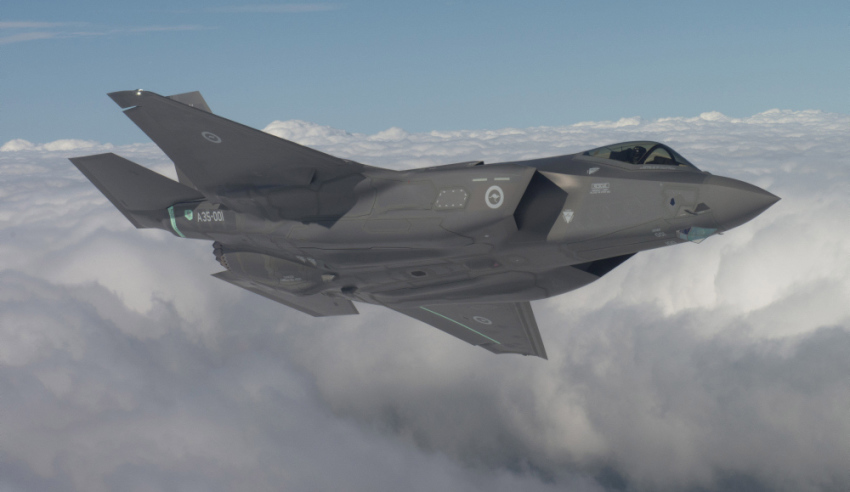The RAAF should proactively explore the benefits of integrating AI technology, which could shape the future of airpower, one analyst observes.
According to Malcolm Davis, senior analyst at the Australian Strategic Policy Institute (ASPI), artificial intelligence could be the most critical development in airpower technology over the coming years.
Davis notes the US Air Force’s recent demonstration of AI capability during a test flight in December, in which a U-2 reconnaissance aircraft carrying a single crew member leveraged an AI algorithm as a ‘virtual backseater’.
The ‘ARTUµ’ system was tasked with identifying adversary missile launchers, employing sensors and tactical navigation, while the human pilot identified enemy aircraft.
“The flight demonstrated human-machine teaming at a new level and points to the potential to integrate AI backseaters into current fighters like the F-35 and future air combat aircraft such as the US Next Generation Air Dominance platform, or NGAD,” Davis writes.
“The F-35 has room for just one person in the cockpit, but with AI, the pilot gets a backseater that can manage the complex process of integrating data from a multitude of onboard and offboard sensors and other information sources, freeing up the pilot to fly and fight.
Davis says AI could also be used to manage human-machine teaming between the F-35 and autonomous systems, including the Boeing-built ‘Loyal Wingman’ autonomous platform.
“AI dramatically reduces the aircrew’s workload and can process data and information faster than a human pilot, including rapidly assessing threats,” Davis continues.
“But it also boosts the operational potential of autonomous platforms in crewed-uncrewed teaming because it can ensure greater oversight and control – ‘on the loop’ for the autonomous platform – while giving the human pilot the big picture of tactical operations.
“That eases rules-of-engagement constraints on using autonomous systems, including future lethal autonomous weapons platforms.”
The ASPI analyst said AI technology would provide benefits to lighter, faster aircraft (like the F-35) by enhancing manoeuvrability while also supporting slower, heavier aircraft (like the E-7A Wedgetail and the P-8A Poseidon) by enhancing operating efficiency through the use of offboard sensor technology.
“AI can manage a diverse network of sensors and platforms and take the lead in transforming the flood of data gathered over the future battlespace into a knowledge edge – the key to getting the information advantage that’s critical for success,” Davis observes.
As such, Davis argues that the RAAF should explore AI innovations to ensure it is equipped with superior capability.
“The role of AI in the cockpit gives us a glimpse into the future of airpower. The Royal Australian Air Force needs to be thinking about where airpower goes next, even as the F-35 achieved initial operational capability in December and moves to final operational capability in 2023.
“That future is almost certain to be a mix of crewed and autonomous systems, working together in teams to deliver a range of effects as a system of systems.”
Davis argues that Defence should not wait until the late 2030s for a sixth-generation platform to emerge to replace the fifth-generation F-35s.
“It would be a mistake to delay consideration of future air combat capability by maintaining a traditional acquisitions mindset,” he says.
“Yet, the 2020 Force Structure Plan pushes back the start of the F-35 replacement process to the mid-2030s.
“Given the pace of technological change and the rapid deterioration in our strategic environment, that notional timeline needs to be challenged and capability acquisition needs to happen faster.”
Davis urges the RAAF to be “forward-looking and proactive” in accelerating the acquisition of the next generation of air combat capabilities, which “should incorporate the broad application of AI”.
The ASPI analyst acknowledges the risks of premature adoption, with AI remaining a relatively new technology.
Davis notes that considerations of AI integration would require significant investment in software development, supported by research facilities and the training of personnel.
“It will require a substantial boost in digital high-speed communications bandwidth to work. That’s likely to require investment in other technology areas – notably, satellite-based laser-optical communications and quantum technologies,” he says.
Davis concludes: “Meeting all of those challenges will take time, money and skilled personnel.
“The US Air Force’s U-2 demonstration of ARTUµ is one step down a path towards tomorrow’s airpower, and Australia needs to proceed with determination to achieve success.”
We would also like to hear your thoughts on the avenues Australia should pursue to support long-term economic growth and development in support of national security in the comments section below, or get in touch with








